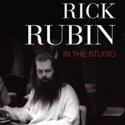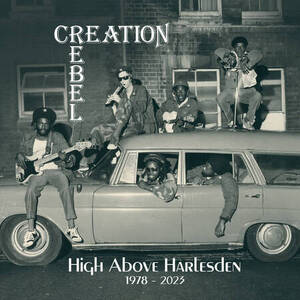
Rick Rubin: In the Studio
by Jake Brown
ECW Press

The 25th anniversary of Def Jam Records presents music fans with a unique opportunity to appreciate the career of its co-founder Rick Rubin. His long-time collaborator Russell Simmons recently took the opportunity, during a VH1 Honors special devoted to the pioneering hip-hop label, to declare Rubin “the greatest producer of all time.” Of course, there are a number of legendary producers whose acolytes would raise vigorous objection to that idea, but you can make a pretty strong case on Rubin’s behalf.
A practicing Buddhist, known as much for his long beard, his omnipresent mala beads, and typically barefooted lotus posture, Rubin is surely not concerned with anyone’s production-chops hierarchy. His reluctance to engage in the usual industry crossfire is as much a factor in the legend as the intense work ethic he’s displayed during three decades in the business. Few have worked with a vaster array of talent, very few have contributed to more classic records, and no one has put together a résumé quite like Rick Rubin’s. Nor would anyone have ever thought to.
Rick Rubin: In the Studio is not a book worthy of its subject, and it’s a terrible advertisement for its author. Jake Brown has written a number of books about major figures in American music, including Alice In Chains, Biggie Smalls, Suge Knight, 50 Cent, Kanye West, R. Kelly, Jay-Z, Motley Crue, Black Eyed Peas, Red Hot Chili Peppers, and Rick James. (His In the Studio series also has volumes on Heart, Prince, Dr. Dre, and Tupac Shakur.) This one feels like something he put together within a few weeks for money on the side. One hopes there is more to it than that, but I doubt it.
If any first-hand reporting went into this book, there is no way to tell from the way it’s organized. All of the cited quotes were cribbed from other sources, mostly interviews with specialist music magazines. Any original insight is subsumed by a fan-boy ethic that pervades the text. His book is constructed in such a way that Brown somehow manages to make Rubin come off as overrated. However, the nine-page sessionography included at the end of the book is thoroughly compelling, if only for the revelations of work one didn’t know Rubin did.
The text itself runs 225 pages, of which exactly 30 cover the Def Jam years. This earlier material is handled much more ably; this, along with the Johnny Cash stuff, is the music Rick Rubin will be remembered for. Interesting tidbits abound. For example, Ad-Rock of the Beastie Boys discovered LL Cool J’s demo tape while hanging out in Rubin’s dorm room/office. Conversely, Rubin (the group’s original DJ) was the impetus behind their decision to drop drummer Kate Schellenbach and focus on rap. He was the label’s in-house producer for its first five years.
When Rubin speaks of crying on an airplane as he listened to It Takes a Nation of Millions to Hold Us Back, the book – if not the story it chronicles – reaches its narrative peak. From that point neither Rubin, nor this book, are the same. Rubin’s moves to start his own Def American Recordings and shift the focus of his production from rap to rock sparked a new era in his own career; he would go on to achieve commercial and critical heights unseen among his generation. It doesn’t work out so well for the book.
Later chapters dealing with Tom Petty, Slayer, Danzig, AC/DC, System of a Down, The Cult, Mick Jagger, Weezer, Dixie Chicks, and Metallica will simply fall flat; even acolytes of those specific artists will be hard-pressed to extract any fresh tidbits from this compendium of public sources. Rubin’s work with Neil Diamond makes for an interesting five pages, while the Audioslave chapter is most notable for the constant subtle digs at former Rage Against the Machine singer Zach de la Rocha.
The book’s author, like its subject, is a big fan of the Red Hot Chili Peppers, who have retained Rubin as their primary producer, and whose albums take up 50 pages of the book. A Peppers fan can probably glean some useful insight about the band’s gear and working methods; John Frusciante’s evolution within the larger group dynamic comes through well. But one-fourth of the text? Questionable.
What ultimately sells this book, and cements Rubin’s hall-of-fame credentials, is the Def Jam material and the stuff on Johnny Cash. Brown devotes 22 pages to the near-symbiotic relationship between artist and producer, who together collaborated on four albums that encompass arguably the finest work by either man. The success of the Cash-Rubin recordings (which can now, thankfully, be had as a single box set) led countless musicians, fans, and record labels to revisit the work of past masters and present these voices to a new generation of music consumers. As such, many older artists got the best and/or last payday of their careers as an indirect result. Surely the major Cash scholars will cover all this in greater detail, but Brown writes a nice introduction.
On the whole, Rick Rubin: In the Studio is probably not worth the $17.95 it’s asking for. As a survey of his career, and a sampling of the techniques he brings to bear in the studio, it’s merely a passable stopgap. The major writing on Rick Rubin remains to be done, hopefully by Rubin’s own rock-steady hand. But until then, this will do.
ECW Press: http://www.ecwpress.com












